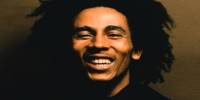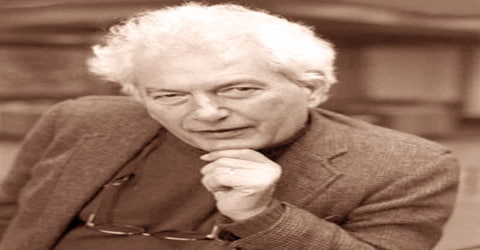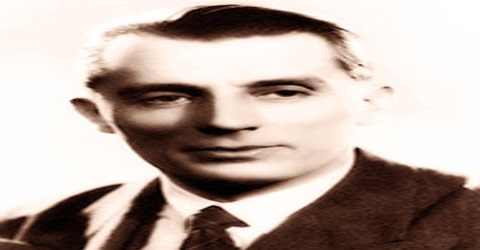Biography of Joseph Stalin
Joseph Stalin – Soviet revolutionary and politician of Georgian ethnicity.
Name: Joseph Stalin
Other names: Иосиф Сталин (Russian); იოსებ სტალინი (Georgian)
Date of Birth: 18 December 1878
Place of Birth: Gori, Tiflis Governorate, Caucasus Viceroyalty, Russian Empire
Date of Death: 5 March 1953 (aged 74)
Place of Death: Kuntsevo Dacha, Kuntsevo, Moscow, Russian SFSR, Soviet Union
Father: Besarion Jughashvili
Mother: Ekaterine Geladze
Spouse: Ekaterine Svanidze (1906–07); Nadezhda Alliluyeva (1919–32)
Children: Svetlana Alliluyeva, Vasily Stalin, Yakov Dzhugashvili, Konstantin Kuzakov, Artyom Sergeyev
Early Life
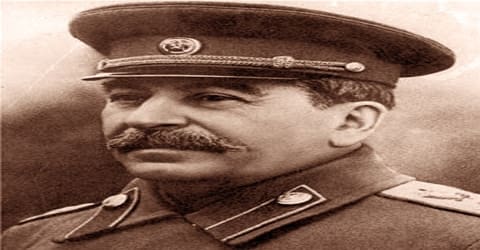
Joseph Stalin (born Ioseb Besarionis dze Jughashvili) was born on 18 December 1878 in Gori, Georgia. He was a Soviet revolutionary and politician of Georgian ethnicity. He ruled the Soviet Union from 1922 until his death in 1953, holding the titles of General Secretary of the Communist Party of the Soviet Union from 1922 to 1952 and the nation’s Premier from 1941 to 1953. Initially presiding over an oligarchic one-party system that governed by plurality, he became the de facto dictator of the Soviet Union by the 1930s. Ideologically committed to the Leninist interpretation of Marxism, Stalin helped to formalize these ideas as Marxism–Leninism, while his own policies became known as Stalinism.
He led his country alongside America and England through World War II (1939–45) in their fight against Germany, Italy, and Japan. As ruler of Russia, Stalin was the leader of world communism for almost thirty years.
Born to a poor family in Gori, Russian Empire (now Georgia), Stalin joined the Marxist Russian Social Democratic Labour Party as a youth. He edited the party’s newspaper, Pravda, and raised funds for Vladimir Lenin’s Bolshevik faction via robberies, kidnappings, and protection rackets. Repeatedly arrested, he underwent several internal exiles. After the Bolsheviks seized power during the 1917 October Revolution and created a one-party state under Lenin’s new Communist Party, Stalin joined its governing Politburo. Serving in the Russian Civil War before overseeing the Soviet Union’s establishment in 1922, Stalin assumed leadership over the country following Lenin’s 1924 death.
Joseph Stalin rose to power as General Secretary of the Communist Party, becoming a Soviet dictator upon Vladimir Lenin’s death. Stalin forced rapid industrialization and the collectivization of agricultural land, resulting in millions dying from famine while others were sent to camps. His Red Army helped defeat Nazi Germany during WWII.
Widely considered one of the 20th century’s most significant figures, Stalin was the subject of a pervasive personality cult within the international Marxist–Leninist movement, for whom Stalin was a champion of socialism and the working class. Since the dissolution of the Soviet Union in 1991, Stalin has retained popularity in Russia and Georgia as a victorious wartime leader who established the Soviet Union as a major world power. Conversely, his totalitarian government has been widely condemned for overseeing mass repressions, ethnic cleansing, hundreds of thousands of executions, and famines which caused the deaths of millions.
Childhood, Family and Educational Life
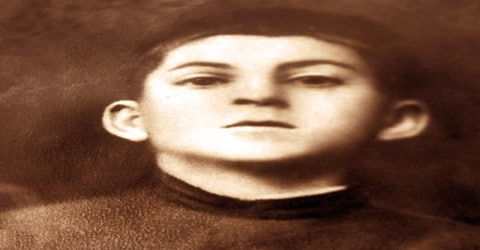
Joseph Stalin, Russian in full Iosif Vissarionovich Stalin, original name (Georgian) Ioseb Dzhugashvili, was born on December 18, 1879, in Gori, Georgia. He was the son of Besarion Jughashvili and Ekaterine Geladze, who had married in May 1872, and had lost two sons in infancy prior to Stalin’s birth. They were ethnically Georgian and Stalin grew up speaking the Georgian language. Gori was then part of the Russian Empire and was home to a population of 20,000, the majority of whom were Georgian but with Armenian, Russian, and Jewish minorities. Stalin was baptized on 29 December. He was nicknamed “Soso”, a diminutive of “Ioseb”.
In late 1888, aged 10 Stalin enrolled at the Gori Church School. This was normally reserved for the children of clergy, although Charkviani ensured that the boy received a place. Stalin excelled academically, displaying talent in painting and drama classes, writing his own poetry, and singing as a choirboy. He got into many fights, and a childhood friend later noted that Stalin “was the best but also the naughtiest pupil” in the class. Stalin faced several severe health problems; in 1884, he contracted smallpox and was left with facial pock scars. Aged 12, he was seriously injured after being hit by a phaeton, which was the likely cause of a lifelong disability to his left arm.
Joseph did well in school, and his efforts gained him a scholarship to Tiflis Theological Seminary in 1894. A year later, Joseph came in contact with Messame Dassy, a secret organization that supported Georgian independence from Russia. Some of the members were socialists who introduced him to the writings of Karl Marx and Vladimir Lenin. Joseph joined the group in 1898.
Stalin was again academically successful and gained high grades. He continued writing poetry; five of his poems were published under the pseudonym of “Soselo” in Ilia Chavchavadze’s newspaper Iveria (‘Georgia’). Thematically, they dealt with topics like nature, land, and patriotism.
Stalin’s father died in 1891. Stalin’s mother, Ekaterina, a religious and illiterate (unable to read or write) peasant woman, sent her teenage son to the theological seminary in Tpilisi (Tiflis), Georgia, where Stalin prepared for the ministry. Shortly before his graduation, however, he was expelled in 1899 for spreading subversive views (ideas that went against those of the government).
Stalin joined a forbidden book club active at the school; he was particularly influenced by Nikolay Chernyshevsky’s 1863 pro-revolutionary novel What Is To Be Done? Another influential text was Alexander Kazbegi’s The Patricide, with Stalin adopting the nickname “Koba” from that of the book’s bandit protagonist. He also read Capital, the 1867 book by German sociological theorist Karl Marx. Stalin devoted himself to Marx’s socio-political theory, Marxism, which was then on the rise in Georgia, one of the various forms of socialism opposed to the empire’s governing Tsarist authorities. At night, he attended secret workers’ meetings and was introduced to Silibistro “Silva” Jibladze, the Marxist founder of Mesame Dasi (‘Third Group’), a Georgian socialist group. In April 1899, Stalin left the seminary and never returned, although the school encouraged him to come back.
Personal Life
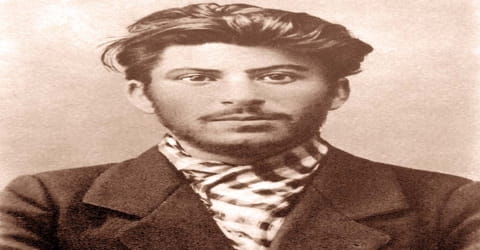
In about 1906 Stalin had married a pious Georgian girl, Ekaterina Svanidze. She died some three years later and left a son, Jacob, whom his father treated with contempt, calling him a weakling after an unsuccessful suicide attempt in the late 1920s; when Jacob was taken prisoner by the Germans during World War II, Stalin refused a German offer to exchange his son.
His second wife, Nadezhda Alleluyeva, killed herself in 1932, apparently over Stalin’s dictatorial rule of the party. The two children from his second marriage outlived their father, but they were not always on good terms with him. The son, Vasili, an officer in the Soviet air force, drank himself to death in 1962. The daughter, Svetlana, fled to the United States in the 1960s.
In the hamlet, Stalin had a relationship with Lidia Pereprygia, who was thirteen at the time and thus a year under the legal age of consent in Tsarist Russia. Circa December 1914, Pereprygia gave birth to Stalin’s child, although the infant soon died. She gave birth to another of his children, Alexander, circa April 1917. In Kureika, Stalin lived closely with the indigenous Tunguses and Ostyak and spent much of his time fishing.
Stalin was of Georgian not Russian origin, and persistent rumors claim that he was Ossetian on the paternal side.
During the time of the 1904–1905 revolution, Stalin made a name for himself as the organizer of daring bank robberies and raids on money transports, an activity that Marxist leader V. I. Lenin (1870–1924) considered important due to the party’s need for funds. Many other Marxists considered this type of highway robbery unworthy of a revolutionary socialist.
Career and Works

Stalin participated in congresses (governing parties) of the Russian Social Democratic Workers Party at Tampere, London, and Stockholm, Sweden, in 1905 and 1906, meeting Lenin for the first time at these congresses. In 1912 Lenin recruited Stalin into the Central Committee of the Bolshevik party. Stalin spent the major portion of the years from 1905 to 1912 in organizational work for the movement, mainly in the city of Baku, Russia. The secret police arrested him several times, and several times he escaped. Eventually, after his return from Vienna, Austria, the police caught him again, and he was exiled to the faraway village of Turukhansk beyond the Arctic Circle. He remained there until the fall of czarism, the Russian rule of a sole leader or king. He adopted the name Stalin (“man of steel”) around 1913.
In February 1917, the Russian Revolution began. By March, the tsar had abdicated the throne and was placed under house arrest. For a time, the revolutionaries supported a provisional government, believing a smooth transition of power as possible. In April 1917, Bolshevik leader Vladimir Lenin denounced the provisional government, arguing that the people should rise up and take control by seizing land from the rich and factories from the industrialists. By October, the revolution was complete and the Bolsheviks were in control.
In December 1899, Dzhugashvili became, briefly, a clerk in the Tiflis Observatory, the only paid employment that Stalin is recorded as having taken outside politics; there is no record of his ever having done manual labor. In 1900 he joined the political underground, fomenting labor demonstrations and strikes in the main industrial centers of the Caucasus, but his excessive zeal in pushing duped workers into bloody clashes with the police antagonized his fellow conspirators.
By this point, the empire’s secret police the Okhrana were aware of Stalin’s activities within Tiflis’ revolutionary milieu. They attempted to arrest him in March 1901, but he escaped and went into hiding, living off the donations of friends and sympathizers. Remaining underground, he helped plan a demonstration for May Day 1901, in which 3,000 marchers clashed with the authorities. He continued to evade arrest by using aliases and sleeping in different apartments. In November 1901, he was elected to the Tiflis Committee of the Russian Social Democratic Labour Party (RSDLP), a Marxist party founded in 1898.
After the Social Democrats (Marxist revolutionaries) of the Russian Empire had split into their two competing wings Menshevik and Bolshevik in 1903, Dzhugashvili joined the second, more militant, of these factions and became a disciple of its leader, Lenin. Between April 1902 and March 1913, Dzhugashvili was seven times arrested for revolutionary activity, undergoing repeated imprisonment and exile. The mildness of the sentences and the ease with which the young conspirator effected his frequent escapes lend color to the unproven speculation that Dzhugashvili was for a time an agent provocateur in the pay of the imperial political police.
After the fall of czarism, Stalin made his way at once to Petrograd, Russia, where until the arrival of Lenin from Switzerland he was the senior Bolshevik and the editor of Pravda, the party newspaper. After Lenin’s return, Stalin remained in the high councils of the party but had only a small role in the preparations for the October Revolution, which placed the Bolsheviks in power. In the first position of the communist Soviet government, he held the post of people’s commissar for nationalities (in charge of party loyalty).
In February 1913, Stalin was arrested while back in Saint Petersburg. He was sentenced to four years exile in Turukhansk, a remote part of Siberia from which escape was particularly difficult. In August, he arrived in the village of Monastyrskoe, although after four weeks was relocated to the hamlet of Kostino. In March 1914, concerned over a potential escape attempt, the authorities moved Stalin to the hamlet of Kureika on the edge of the Arctic Circle.
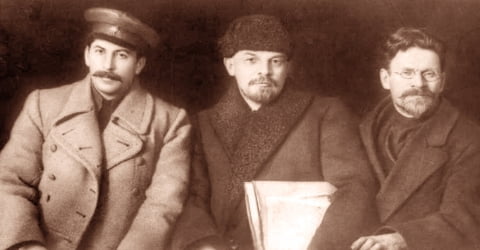
(Joseph Stalin, Lenin, and Mikhail Kalinin meeting in 1919. All three of them were “Old Bolsheviks”—members of the Bolshevik party before the October Revolution.)
The fledgling Soviet government went through a violent period after the revolution as various individuals vied for position and control. In 1922, Stalin was appointed to the newly created office of general secretary of the Communist Party. Though not a significant post at the time, it gave Stalin control over all party member appointments, which allowed him to build his base. He made shrewd appointments and consolidated his power so that eventually nearly all members of the central command owed their position to him. By the time anyone realized what he had done, it was too late. Even Lenin, who was gravely ill, was helpless to regain control from Stalin.
During Lenin’s last illness and after his death in 1924, Stalin served as a member of the three-man committee that ran the affairs of the party and the country. Stalin represented, for the time, the right-wing (conservative) of the party that wanted to stay true to the ideas of the revolution. He and his spokesman, Nikolai Bukharin (1888–1938), warned against revolutionaries and argued in favor of continuing the more cautious and patient policies that Lenin had installed with the New Economic Policy (NEP).
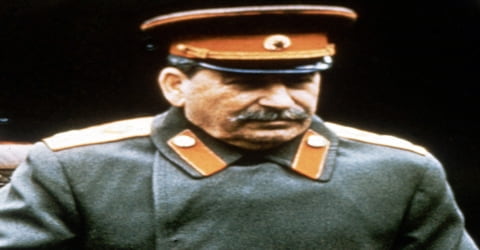
Active as a politico-military leader on various fronts during the Civil War of 1918–20, Stalin also held two ministerial posts in the new Bolshevik government, being commissar for nationalities (1917–23) and for state control (or workers’ and peasants’ inspection; 1919–23). But it was his position as secretary general of the party’s Central Committee, from 1922 until his death, that provided the power base for his dictatorship. Besides heading the secretariat, he was also a member of the powerful Politburo and of many other interlocking and overlapping committees an arch-bureaucrat engaged in quietly outmaneuvering brilliant rivals, including Trotsky and Grigory Zinovyev, who despised such mundane organizational work. Because the pockmarked Georgian was so obviously unintellectual, they thought him unintelligent—a gross error and one literally fatal in their case.
In December 1918, Stalin was sent to Perm to lead an inquiry into how Alexander Kolchak’s White forces had been able to decimate Red troops based there. He returned to Moscow between January and March 1919, before being assigned to the Western Front at Petrograd. When the Red Third Regiment defected, he ordered the public execution of captured defectors. In September he was returned to the Southern Front. During the war, he proved his worth to the Central Committee, displaying decisiveness, determination, and a willingness to take on responsibility in conflict situations. At the same time, he disregarded orders and repeatedly threatened to resign when affronted. In November 1919, the government awarded him the Order of the Red Banner for his wartime service.
In back-to-back five-year plans, the Soviet Union under Stalin began to modernize (to accept modern ideas and styles) with great speed. Although the military needs of the country drained away precious resources, and World War II brought total destruction to several cities and death to many millions of citizens, the nation by the end of Stalin’s life had become an important industrial country in the world, second only to the United States.
The price the Soviet Union paid for this great achievement remains staggering. It included the destruction of all free enterprise (business organizations) in both town and country. The transformation of Soviet agriculture in the early 1930s into collectives (groups of managed farms) tremendously damaged the country’s food production. Living standards were drastically lowered at first, and more than a million people died of starvation. Meanwhile, Stalin jailed and executed vast numbers of party members, especially the old revolutionaries and the leading figures in many other areas. Stalin created a new kind of political system characterized by severe police control, strengthening of the government, and personal dictatorship. Historians consider his government one of history’s worst examples of totalitarianism or having complete political control with no opposition. In world affairs the Stalinist system became isolationist, meaning the country moved away from building relations with foreign nations.
In the late 1920s and early 1930s, Stalin reversed the Bolshevik agrarian policy by seizing land given earlier to the peasants and organizing collective farms. This essentially reduced the peasants back to serfs, as they had been during the monarchy. Stalin believed that collectivism would accelerate food production, but the peasants resented losing their land and working for the state. Millions were killed in forced labor or starved during the ensuing famine. Stalin also set in motion rapid industrialization that initially achieved huge successes, but over time cost millions of lives and vast damage to the environment. Any resistance was met with the swift and lethal response; millions of people were exiled to the labor camps of the Gulag or were executed.
In late 1934 just when the worst excesses of Stalinism seemed to have spent themselves the Secretary-General launched a new campaign of political terror against the very Communist Party members who had brought him to power; his pretext was the assassination, in Leningrad on December 1, of his leading colleague and potential rival, Sergey Kirov. That Stalin himself had arranged Kirov’s murder as an excuse for the promotion of mass bloodshed was strongly hinted by Nikita Khrushchev, first secretary of the party, in a speech denouncing Stalin at the 20th Party Congress in 1956.
From the middle of the 1930s onward, Stalin personally managed the vast political and economic system he had established. Formally, he took charge of it in May 1941, when he assumed the office of chairman of the Council of Ministers. After Germany invaded the Soviet Union, Stalin also assumed formal command of the entire military establishment.
To make matters worse, the purges of the 1930s had depleted the Soviet Army and government leadership to the point where both were nearly dysfunctional. After heroic efforts on the part of the Soviet Army and the Russian people, the Germans were turned back at Stalingrad in 1943. By the next year, the Soviet Army was liberating countries in Eastern Europe, even before the Allies had mounted a serious challenge against Hitler at D-Day.
Stalin had been suspicious of the West since the inception of the Soviet Union. Ever since the Soviet Union had entered the war, Stalin had demanded the Allies open up a second front against Germany. Both British Prime Minister Winston Churchill and American President Franklin D. Roosevelt argued that such an action would result in heavy casualties. This only deepened Stalin’s suspicion of the West, as millions of Russians died.
The Battle of Stalingrad (in the following winter) and the Battle of Kursk (in the summer of 1943) were also won by the Soviet Army under Stalin’s supreme direction, turning the tide of invasion against the retreating Germans, who capitulated in May 1945. As a war leader, Stalin maintained close personal control over the Soviet battlefronts, military reserves, and war economy. At first over-inclined to intervene with inept telephoned instructions, as Hitler did, the Soviet generalissimo gradually learned to delegate military decisions.
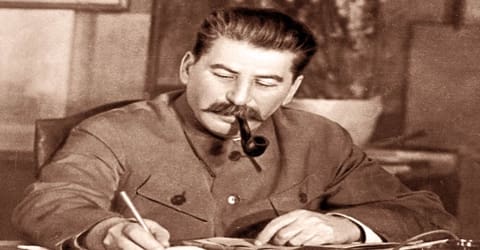
Stalin participated in high-level Allied meetings, including those of the “Big Three” with Churchill and Roosevelt at Tehrān (1943), Yalta (1945), and Potsdam (1945). A formidable negotiator, he outwitted these foreign statesmen; his superior skill has been acclaimed by Anthony Eden, then British foreign secretary.
The situation changed at the Potsdam Conference in July 1945. Roosevelt died that April and was replaced by President Harry S. Truman. British parliamentary elections had replaced Prime Minister Churchill with Clement Attlee as Britain’s chief negotiator. By now, the British and Americans were suspicious of Stalin’s intentions and wanted to avoid Soviet involvement in a postwar Japan. The dropping of two atomic bombs in August 1945 forced Japan’s surrender before the Soviets could mobilize.
After the war, Stalin was according to Service at the “apex of his career”. Within the Soviet Union, he was widely regarded as the embodiment of victory and patriotism. His armies controlled Central and Eastern Europe up to the River Elbe. In June 1945, Stalin adopted the title of Generalissimus and stood atop Lenin’s Mausoleum to watch a celebratory parade led by Zhukov through Red Square. At a banquet held for army commanders, he described the Russian people as “the outstanding nation” and “leading force” within the Soviet Union, the first time that he had unequivocally endorsed the Russians over other Soviet nationalities. In 1946, the state published Stalin’s Collected Works. In 1947, it brought out the second edition of his official biography, which eulogized him to a greater extent than its predecessor. He was quoted in Pravda on a daily basis and pictures of him remained pervasive on the walls of workplaces and homes.
Stalin’s conduct of Russian military strategy in the war remains as controversial as most of his activities. Some evidence indicates that he committed serious mistakes, but other evidence gives him credit for brilliant achievements. The fact remains that under Stalin the Soviet Union won the war, emerged as one of the major powers in the world, and managed to bargain for a distribution of the spoils of war (seized land resulting from Soviet victory) that enlarged its area of domination significantly.
Death and Legacy

(A statue of Stalin in Grūtas Park; it originally stood in Vilnius, Lithuania)
Stalin died of a brain hemorrhage (an abnormal bleeding of the brain) on March 5, 1953. His body was placed in a tomb next to Lenin’s in Red Square in Moscow. After his death, Stalin became a controversial figure in the communist world, where appreciation for his great achievements was offset by harsh criticism of his methods.
Stalin’s death was announced on 6 March. The body was embalmed and then placed on display in Moscow’s House of Unions for three days. Crowds were such that a crash killed around 100 people. The funeral involved the body being laid to rest in Lenin’s Mausoleum in Red Square on 9 March; hundreds of thousands attended. That month featured a surge in arrests for “anti-Soviet agitation” as those celebrating Stalin’s death came to police attention. The Chinese government instituted a period of official mourning for Stalin’s death.
A politician to the marrow of his bones, Stalin had little private or family life, finding his main relaxation in impromptu buffet suppers, to which he would invite high party officials, generals, visiting foreign potentates, and the like. Drinking little himself on these occasions, the dictator would encourage excessive indulgence in others, thus revealing weak points that he could exploit. He would also tease his guests, jocularity, and malice being nicely balanced in his manner; for such bluff banter Stalin’s main henchman, Vyacheslav Molotov, the stuttering foreign minister, was often a target. Stalin had a keen, ironical sense of humor, usually devoted to deflating his guests rather than to amuse them.
Information Source:

